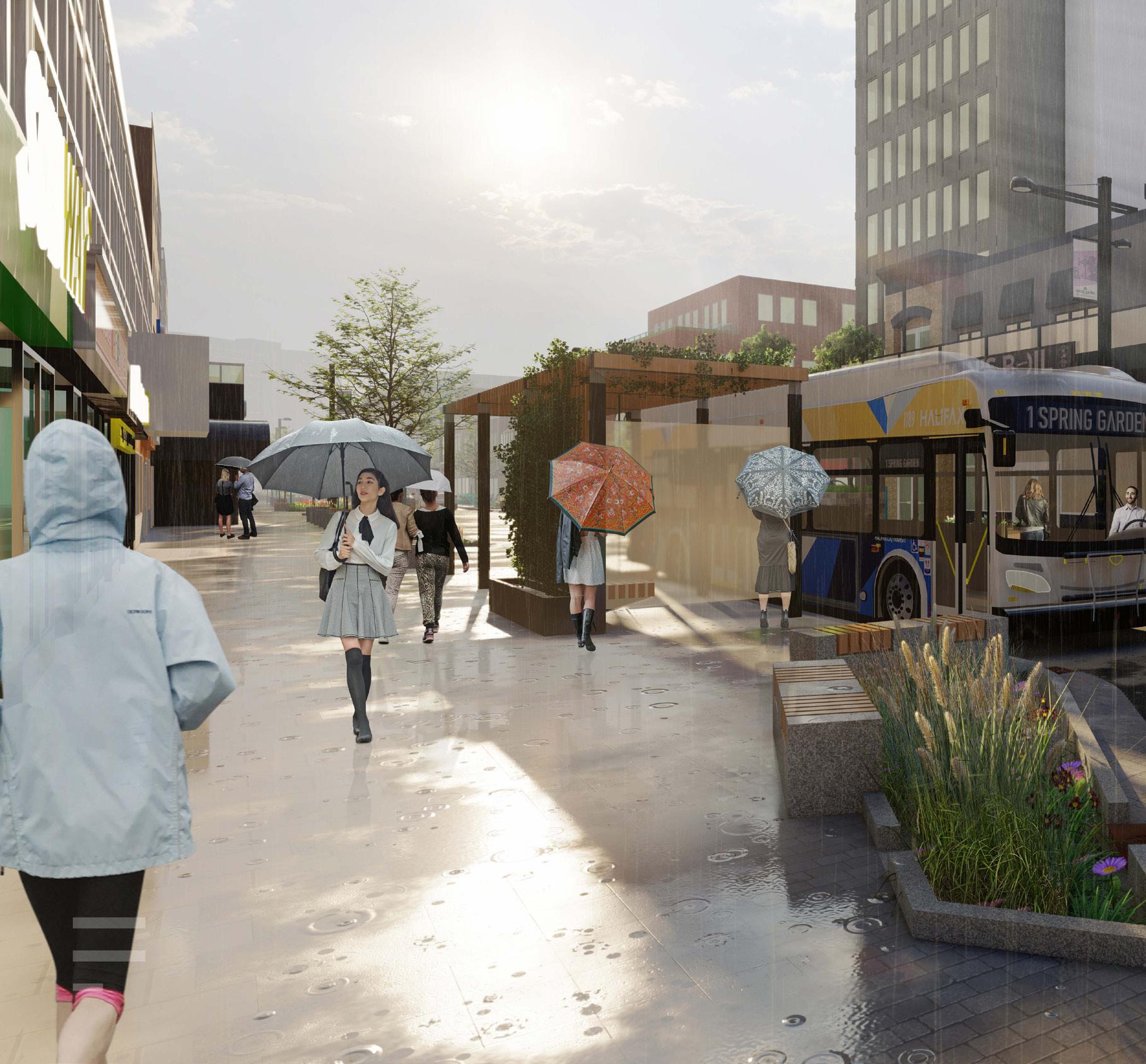
10 minute read
DID HALIFAX GET THE SPRING GARDEN ROAD REVAMP RIGHT?
TOWERING AMBITIONS
Imagine Spring Garden Road is a $10-million streetscaping project the likes of which Halifax has never seen. And the process is almost controversy-free. Have we figured out how to do these things?
BY ALEC BRUCE
The irony doesn’t escape Paul Vienneau, Halifax Regional Municipality’s accessibility advisor to the chief administrative officer.
He recalls a blustery day in November rushing for a meeting in his wheelchair before sidewalk enhancements on Spring Garden Road stopped him cold. “I hit a shitty dirt ramp,” he says. “To go around would have been a pain in the ass, so I went home.”
Still, he’s not unhappy with the $10-million public infrastructure and beautification project that has turned much of the stretch between South Park and Queen streets into more moonscape than streetscape over the past six months. “I talked to the foreman later and he apologized,” he says of the sidewalk incident. “I appreciated that.”
Vienneau insists that despite the disruption and inconvenience, the massive upgrade, which was scheduled to wrap up in December, will “make a real neighbourhood” where people don’t just shop or punch a clock.
And in a city whose residents have historically taken a dim view of their municipal government’s countless civic improvement schemes and ground-breaking fiascos, many appear to agree with him. This time, like him, they say it’s been worth it.
“People tweet me and email me all the time,” says Waye Mason, the HRM councillor for the area, who lives
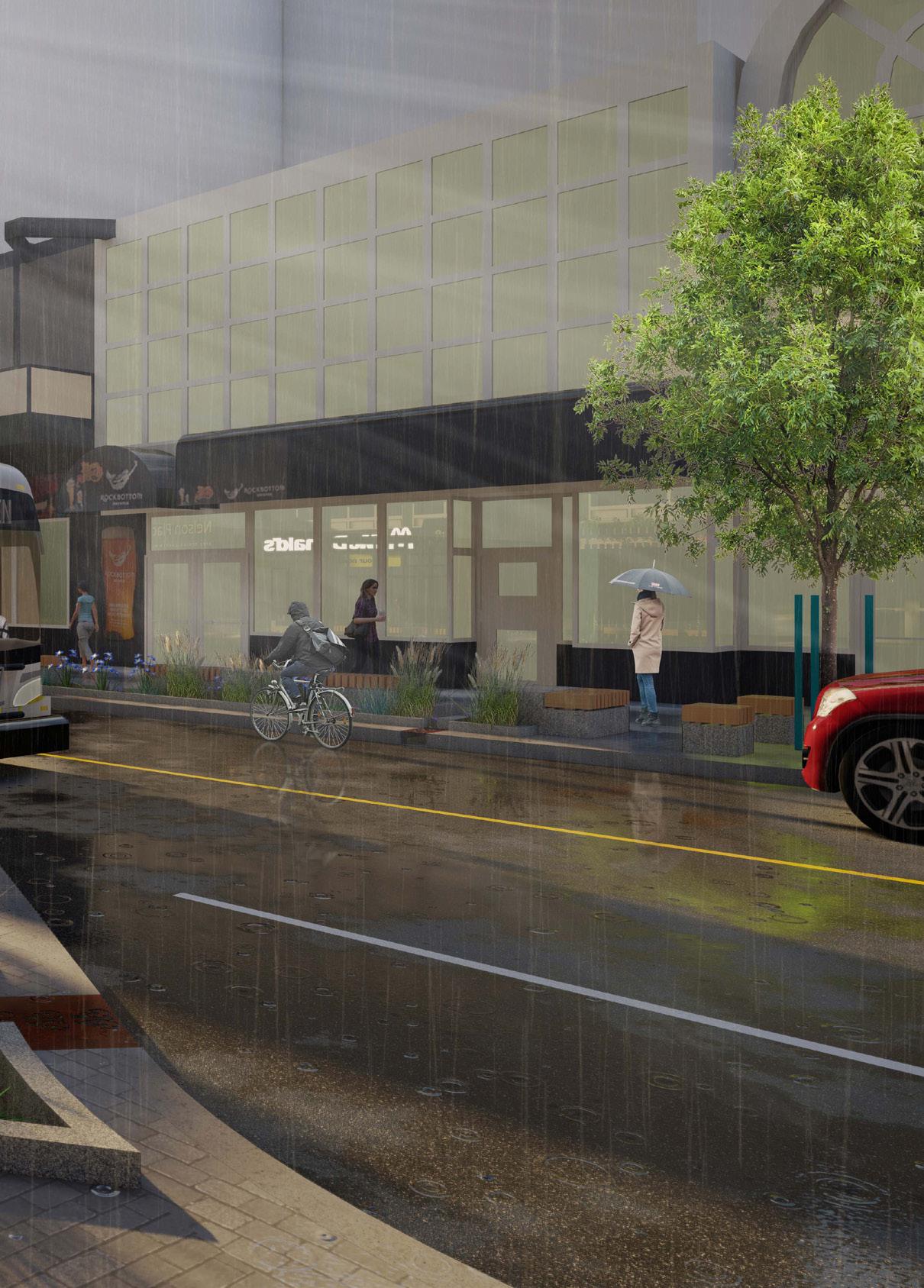
near Dalhousie University and represents much of the urban core. “Most of the businesses (on Spring Garden Road) seem to be okay. We’re beginning to see the payoff now because we’re almost done.”
Others with specific interests in the happy outcome of the project, appropriately dubbed Imagine Spring Garden Road, are reporting similar findings.
“I think overall the public is extremely excited,” says Elora Wilkinson, an HRM planner and manager on the project. “Certainly, what we’ve heard from the business community is that this has been the year to do it. Now’s the time to get it done and be ready to open up to the world again.”
Sue Uteck, a former HRM councillor and current executive director of the Spring Garden Area Business Association, says, “When you talk to merchants on the street, this construction project, surprisingly, hasn’t killed their sales. I can’t tell you there’s one person who’s saying today, ‘This is crazy. You’re killing my business.’ All the merchants will attest that foot traffic is up on Spring Garden.”
Vienneau, who lives next door to the Lord Nelson Hotel, is not a businessperson. But he talks to a lot of them on Spring Garden, and he can attest to one other thing. “This area is like a hub. People from all over come here,” he says. “This is building a space for people to come and for people to stay.”
That sense of community purpose — the defining characteristic of this particular public works — clearly distinguishes it from days of yore. Nothing about it resembles the fight over Historic Properties in the 1960s, for example, or the never-ending toothaches that were the Harbour sight-line preservation debates from various physical and philosophical vantages around the city in the 1970s and ‘80s.
And don’t let anybody get started on equivalencies to the more recent Argyle and Grafton streets redevelopment completed in 2017, during which screaming matches, virtual fistfights, and bankruptcies were the cost of doing business in a four-year-long construction zone.
“That was a disaster,” Mason says. This, he and others involved in the project assert, is not.
There’s a reason for that.
“During the Argyle and Grafton streetscaping project, we learned a lot about working together as a community,” HRM’s extensive public information package, available to anyone with an internet connection, explains. “The project taught us about collaborating on a clear vision for the street, and working together to make the most of the construction phase.”
What’s more, it says, “Argyle and Grafton streets function differently from Spring Garden Road. Among other things, Spring Garden Road must continue to function as a transit corridor. What will be similar is the high quality of design and material finishes, and the emphasis on pedestrians.”
Wilkinson is even more direct about the approach, which started in earnest in 2018. “We went out to the public to talk about exactly what they want it to look like and what’s next,” she says. “That’s how the design evolved.”
Halifax Regional Municipality
Glenn Euloth
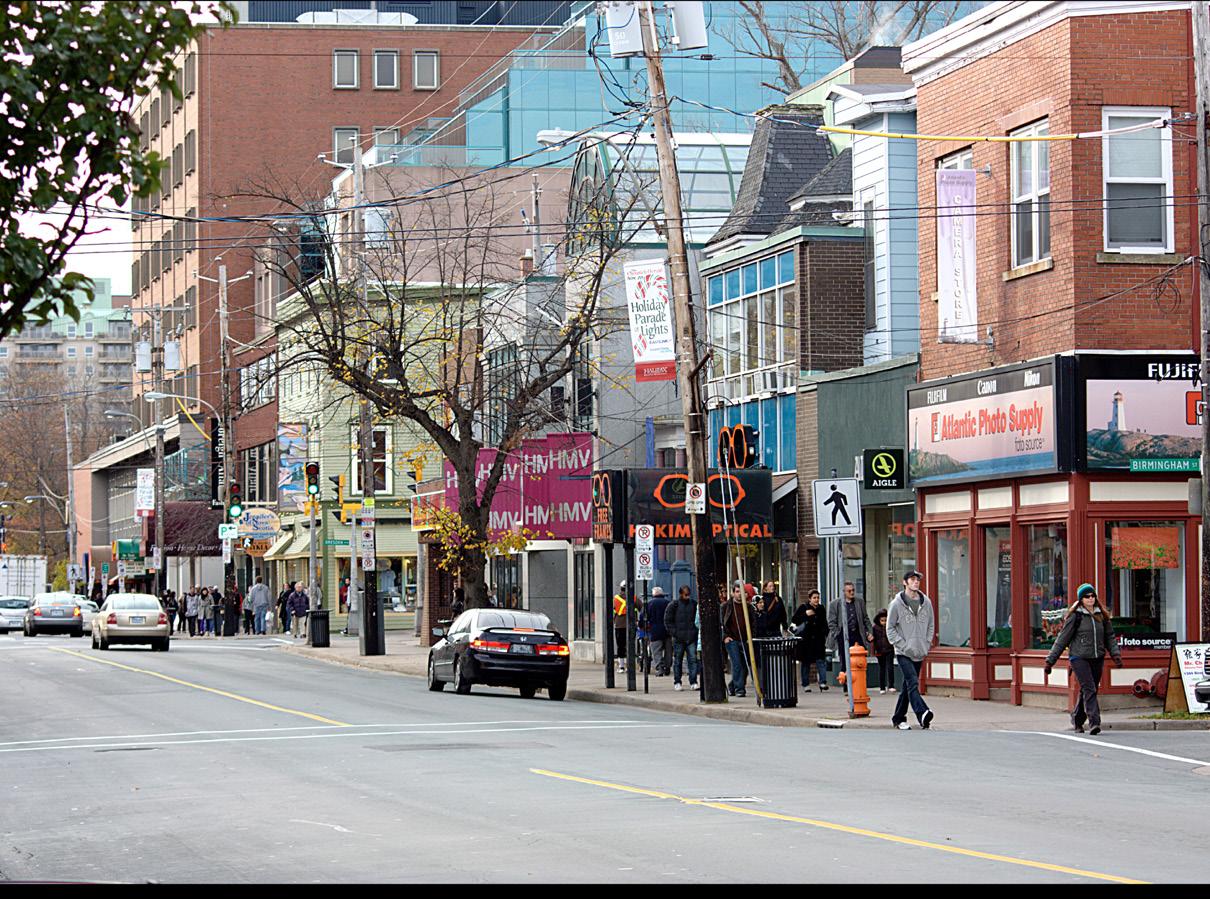
Vienneau was there. “They had a whole bunch of public engagement sessions where they presented a lot of options and gave people a vote on what they liked,” he recalls. “I went to three of these things. And they were all at least two or three hours long. I think they gave the public a pretty fair opportunity to check it out, and give their opinions on it.” For better or worse, but not for lack of consultation, there will be new planting beds protected by raised curbs (do not tiptoe through the tulips). There’ll be 27 new trees and close to 1,000 new peren“Main streets are your nial flowers. There’ll be more open spaces for central cores to your pedestrians to hang out and a variety of brightly businesses and your coloured benches and chairs (with backs and community. People armrests, no less). The sidewalks will be 47 per want to live, work, and cent wider. There’ll be play in the same area” public art displays and rotating exhibits. There might even be some — Sue Uteck public washrooms. As pedestrian traffic, including wheelchairs, is a priority, dedicated bike lanes are out, though nothing about the design discourages cycling. The plan even calls for 30 bike racks. Beneath it all, literally, will be the spiffy, new reinforcements and structures to keep all the pretty “pocket parks” and “paver promenades” from sinking. In November, Halifax planners proposed a yearlong pilot project to keep the street free of all vehicles except public buses. The idea is to improve the efficiency and reliability of public transit along the busy corridor. Plus, Wilkinson told the transportation standing committee, “Transit-only … would further enhance Spring Garden Road as a destination. Uteck says the project will transform urban planning in the city: “It’s going to highlight that main streets are your central cores to your businesses and your community. People want to live, work, and play in the same area. And if you don’t have these downtown main streets revitalized, you’re just putting a donut into your centre and there goes to your tax base, and here comes urban sprawl. So, it’s important to have all the amenities downtown.” More than that, she says, it will be a template for others: “This shows communities across Canada how you do something like this.” Whether or not it does, the comment itself points to the other way this project departs from previous highprofile public works in the city: It has the whole big vision thing pushing it towards posterity. “Our direction really came from council back in 2016 with our economic development strategy,” Wilkinson says. From this came HRM’s integrated mobility plan and rapid bus transit studies for the entire area, highlighting “Spring Garden as a key pedestrian corridor. All of these larger master plans and came together and kind of pointed to what this project was going to do before it started.”
In this way, Imagine Spring Garden Road is a piece in a puzzle, part of an exercise that’s been underway for five years to transform Halifax into an admirably liveable metropolis. “We are working toward an ambitious long-term vision to grow Halifax’s population to 550,000 and its GDP to $30 billion by 2031,” says the economic development strategy. “The plan sets out to make Halifax a more vibrant, thriving, and welcoming city.”
The strategy establishes 15 performance metrics in three categories: business, labour, and lifestyle. The first two are doing fine, coming in at or above expectations. But since 2016, the third seems to have fallen behind with housing affordability, arts and cultural events, and accessibility (“city is easy to get around”) worsening.

Workers install soil cells to improve the health of trees along Spring Garden Road.
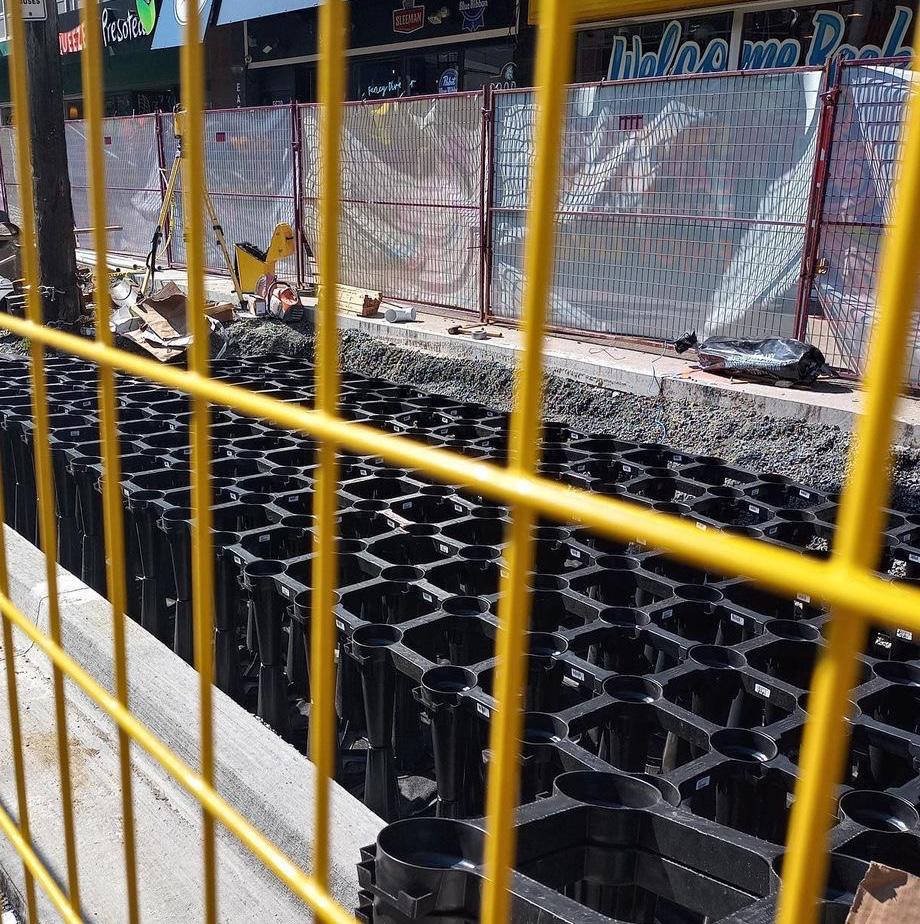
@SpringGardenArea
Halifax Regional Municipality
On these, COVID-19 had a predictably deleterious effect, but even before the pandemic drastically changed the way people lived and connected with one another the decline in social security, mobility and opportunity was underway.
Halifax isn’t unique in this respect.
Cities across Canada are experiencing the same problems as the gap between the gainfully employed and underemployed, the lodged and dislodged, the rich and the poor, continues to grow. But if Imagine Spring Garden Road is designed, at least in part, to improve the city’s lifestyle, how it will do that for the growing number of people who can’t afford to live, let alone, shop in the downtown is not yet clear.
Eric Jonsson is the city’s Street Navigator (a positioned developed and supported by the Downtown Halifax Business Commission and the Spring Garden Area Business Association in 2007). His job is to help find shelter and support for homeless people, people who don’t need to reimagine a street that already stares them down day after precarious day.
@SpringGardenArea
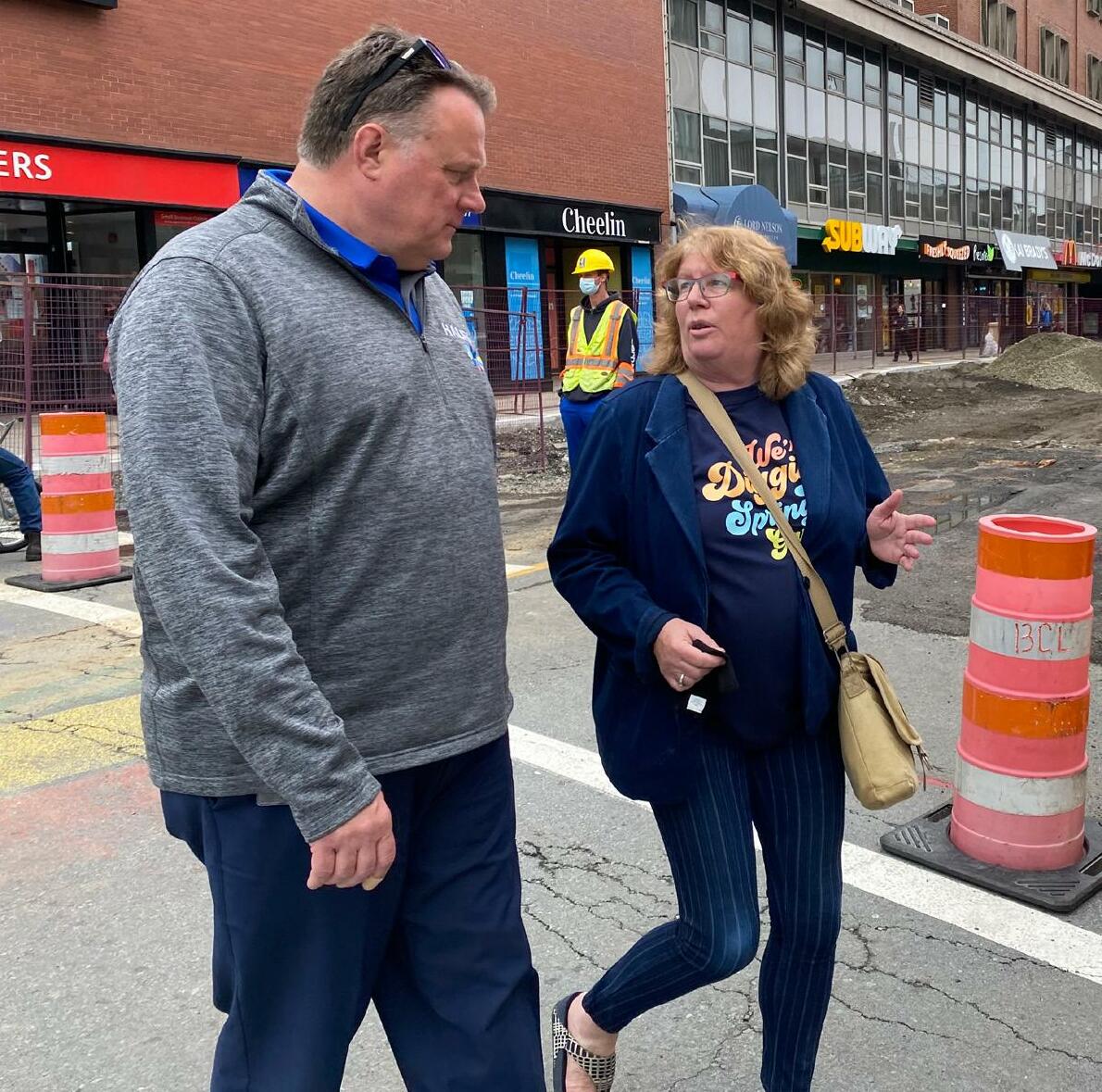
Sue Uteck and Mayor Mike Savage tour the site early in the streetscaping process.
The ambitious revitalization aims to make Spring Garden Road a complete neighbourhood, not just a shopping destination.
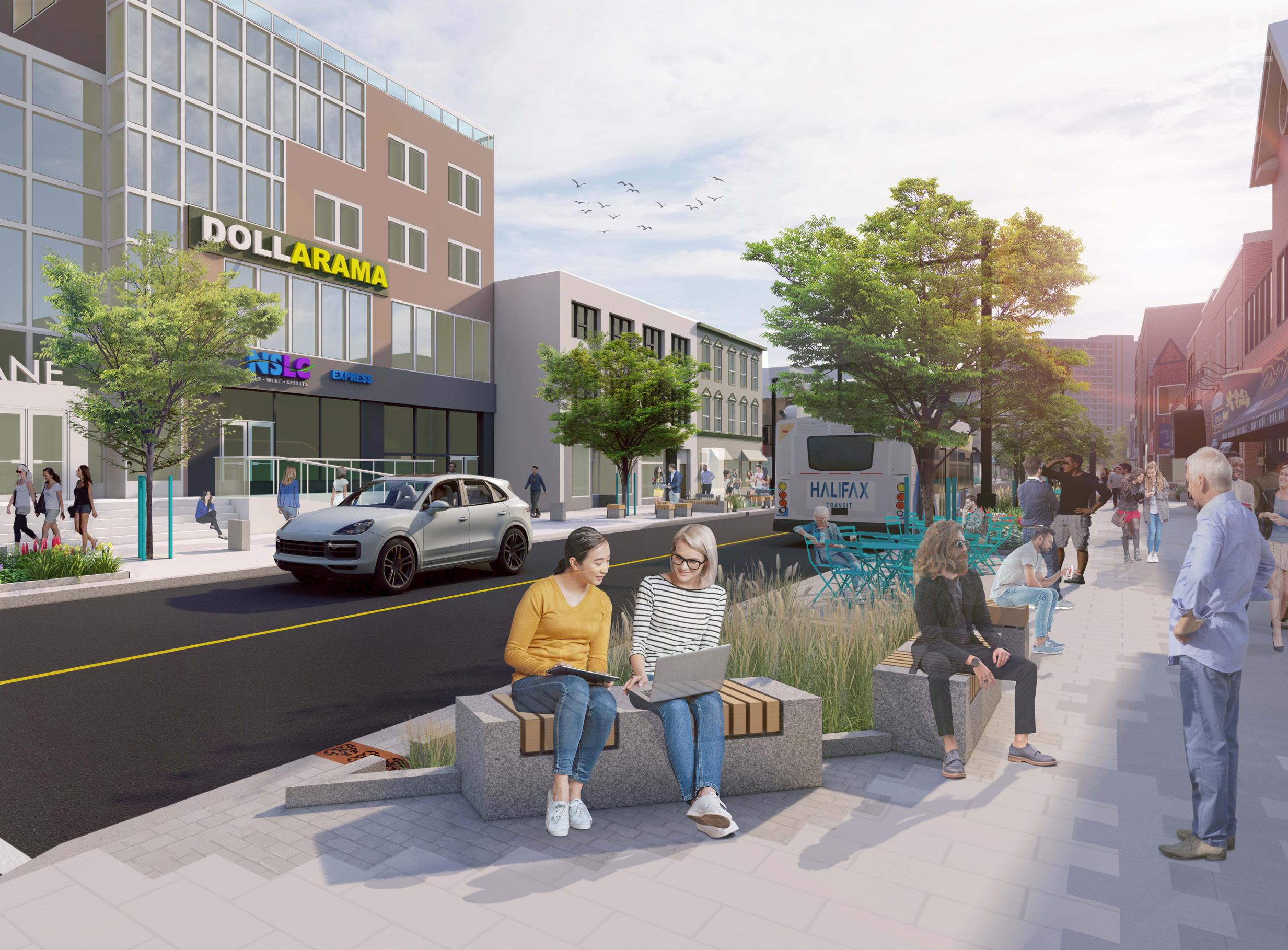
Despite its large scale, the Spring Garden Road revamp has escaped the controversy of other streetscaping projects.
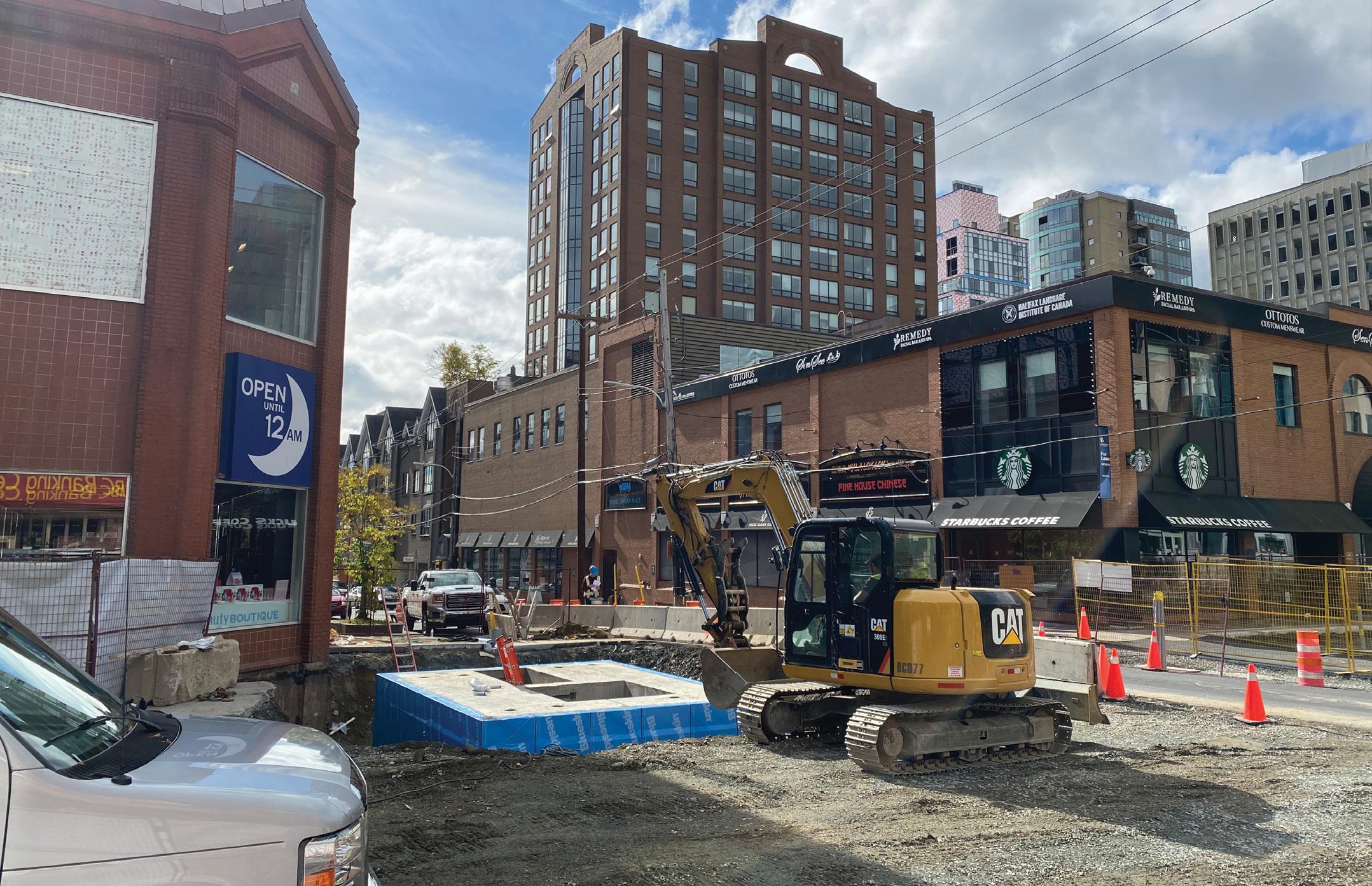
“There’s a lot of volatile people around Spring Garden, and they don’t seem to care much about (the project),” Jonsson says. “I’m trying to get people connected and get assistance, trying to get them housing if I can, but that’s still really tough to find.”
Predictably, perhaps, among the majority of citizens who are not down on their luck or worse — utterly disenfranchised — there is a “rising tide” mentality about all this. Doing nothing about Spring Garden would be worse for everyone, they argue. What’s more, the project sets a new tone for community involvement elsewhere on Halifax’s streetscaping horizon. That, too, is better than nothing.
“We’re not done,” says Wilkinson, who hastens to add that the city is not yet ready to fully outline the future shape of its towering ambitions. “The streetscaping team, of which I am one member, has recently created a streetscaping administrative order that gives direction on how streetscaping will integrate with a lot of projects to improve the aesthetic of regular road work.”
She adds: “A good example of a project like that would be the new South Park cycling (lanes). We worked to add a few more pavers and fancier streetlights along the Public Gardens. It’s just little things like that which take a project to the next level.”
People’s faith and forbearance, notwithstanding, Spring Garden Road’s streetscaping has not been flawless.
Uteck says a lack of financial relief for the businesses that the work affected is the one “missing piece” in the whole exercise. “There should be a construction mitigation fund that businesses can apply (to cover their losses),” she says.
Overall, though, it’s been a remarkable showing for a city that hasn’t always demonstrated much civic sense in major public works, says Mason.
“We’ve got streetscaping that needs maintenance, like Bedford Row and Portland Street,” he notes. “Now, we have a maintenance plan, built into the budgets. You know, they (the municipality) didn’t do that 20 years ago. I feel like we’ve really figured out how to do this stuff and thank God for that …”
He pauses significantly.
“Because the Cogswell Interchange is the next one.”

Click Productions








